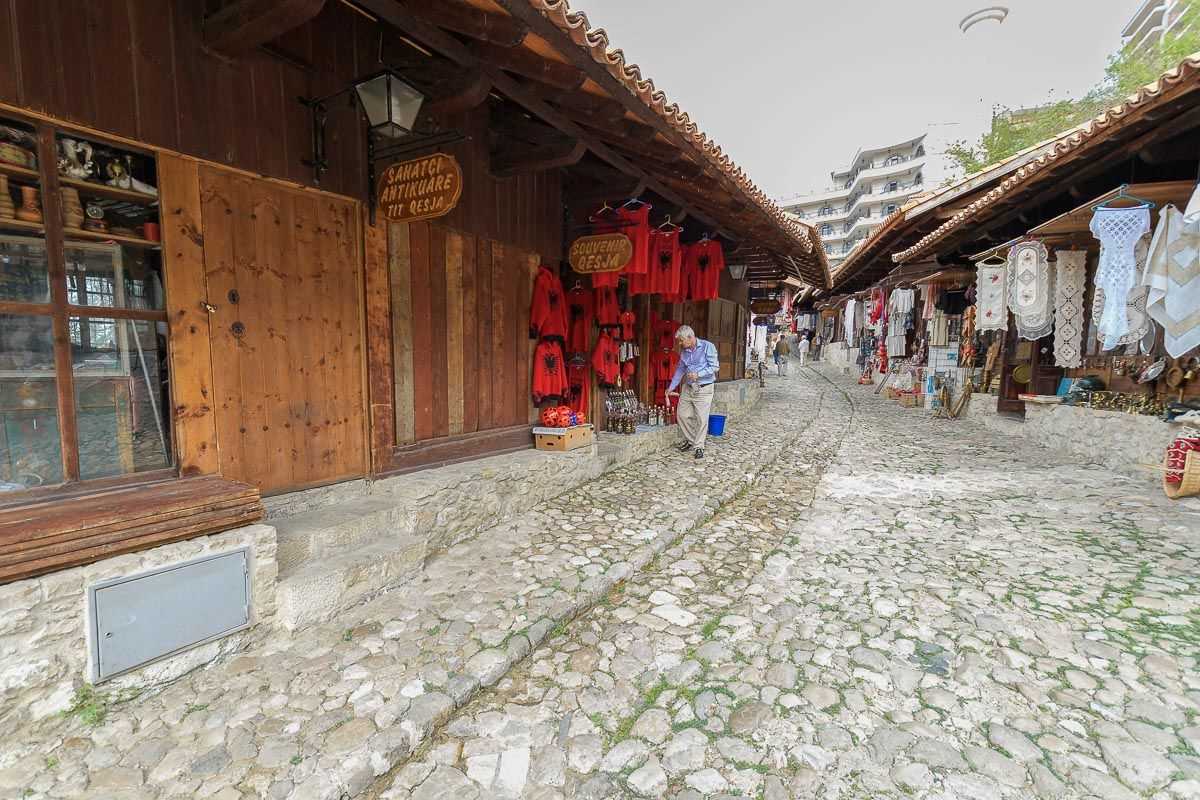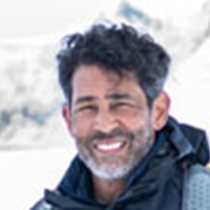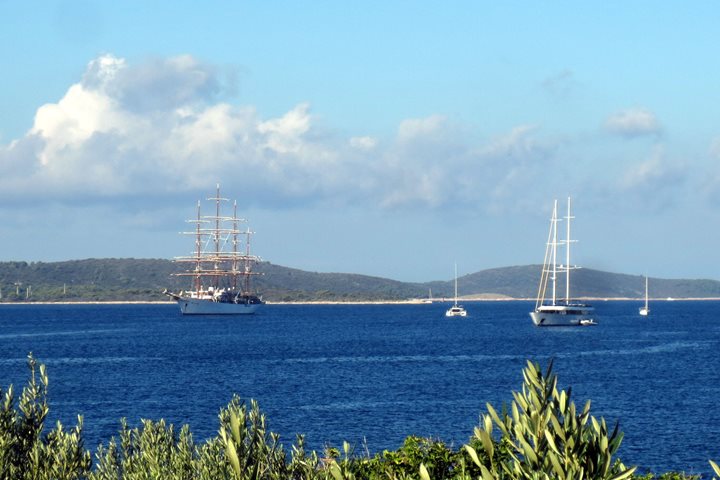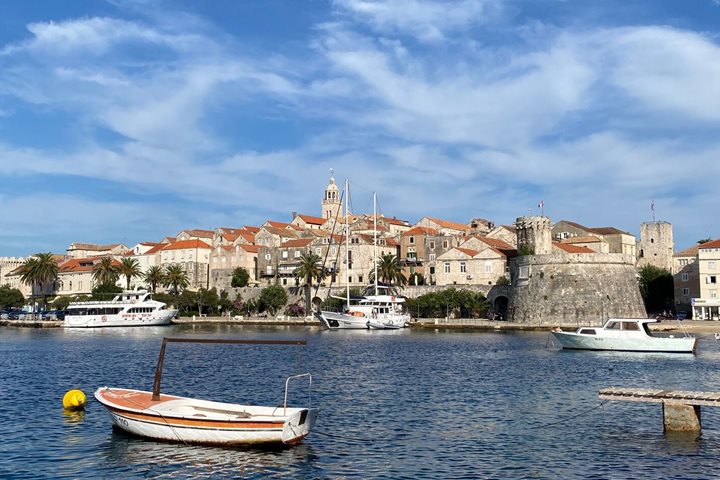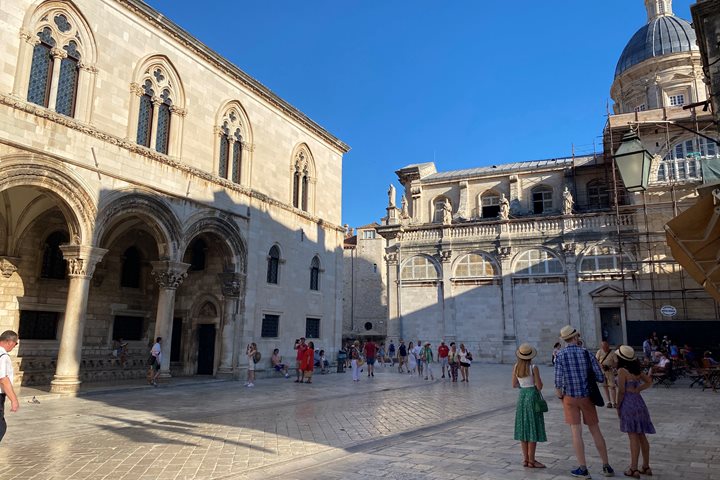Our second day in Albania took us even deeper into this land of contradictions. We disembarked at the rather industrial port of Durrës, ancient Dyrrhachion, the second-largest city in Albania. From there we headed by bus to the medieval stronghold of Kruje, the capital of the region during the rule of the 15th-century national hero George Kastrioti, popularly known as Skanderbeg. After gingerly picking our way across the smoothed, uneven cobblestones of the medieval market, we visited two museums within the old castle. One, the Communist-era museum dedicated to Skanderbeg, had a spectacular view over the valley below, and the other, the ethnographic museum, exhibited daily life in 18th-century Albania.
After the museum visit, we had the opportunity to sample Albanian delicacies at a nearby restaurant. The central dish was a large earthenware pot filled with sizzling potatoes and roasted lamb. As we finished our intriguing dessert—a sweet, sticky, cinnamon-dusted rice dish with morsels of beef—a group of musicians and folk dancers offered a glimpse at traditional Albanian culture.
Departing from Kruje, we headed for the bustling modern capital of Albania, Tirane. Some chose to visit a beautifully painted late 18th-century mosque, while others opted for a walking tour of the main city square, also dedicated to Skanderbeg. Our tour of Albania then came to an end, and we headed back to the port through fields with haystacks, the occasional vineyard, and flocks of sheep, alternating with modern buildings and the ever-present Albanian gas station. Back on the Sea Cloud, as we headed north for Montenegro, expedition leader John Frick offered a lively talk on the history of this fascinating ship, followed by a tour of some of the original state rooms.

